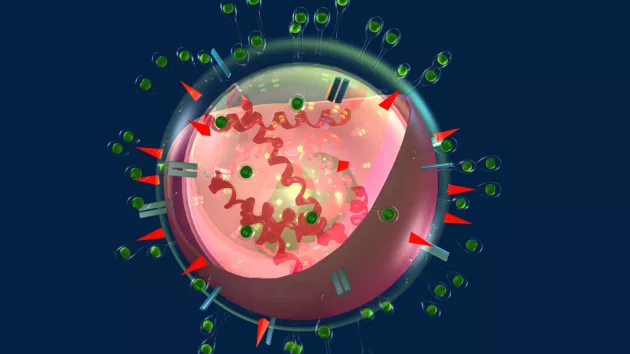
(NEW YORK) — Teenage birth rates have fallen to their lowest levels ever, new provisional federal data published Thursday found.
The report, from the Centers for Disease Control and Prevention’s National Center for Health Statistics, showed the birth rate among 15- to 19-year-olds in 2022 was 13.5 per 1,000 females.
That’s a 3% drop from the rate of 13.9 per 1,000 in 2021 and a record low in the United States.
Aside from an increase in 2006 and 2007, the teen birth rate in the U.S. has been continuously declining since 1991.
“I’m excited the U.S. has made significant progress in reducing pregnancies among youth,” Dr. Vincent Guilamo-Ramos, dean of the Duke University School of Nursing and whose research interests include teen sexual and reproductive health, told ABC News. “The all-time low should be an indication that we’re continuing to move in the right direction.”
For the report, the authors looked at birth certificate data received and processed by the NCHS.
They found that birth rates declined not just across all teens, but for both younger (ages 15–17) and older (ages 18–19) groups as well.
There was a small drop among 15- to 17-year-olds from 5.6 per 1,000 in 2021 to 5.5 per 1,000 in 2022 but a larger drop among 18- to 19-year-olds from 26.6 per 1,000 to 25.6 per 1,000.
The report did not discuss reasons behind the drop, but experts told ABC News it’s a combination of factors including more teens abstaining from sex, contraceptives becoming more easily available to teens and more pregnancy prevention programs aimed at teenagers.
Dr. Monica Woll Rosen, an assistant professor of obstetrics and gynecology at Michigan Medicine who specializes in pediatric and adolescent gynecology, said there’s also been an increase in popularity among teens for long-acting reversible contraception, like intrauterine devices (IUDs).
“In fact, the American Academy of Pediatrics came out and said that it should be used as first line for birth control,” she told ABC News. “And sort of the marketing around that has caused a lot of teens in this age group to get the IUD and therefore not become pregnant.”
Guilamo-Ramos said these decreases are encouraging to see but said it’s important to keep an eye on the data to make sure birth rates among teens are not slowing down.
“From 2007 to 2021, on average, the sort of reduction in the teen birth rate was about 8%,” he said. “And if you look at the more recent data that was released in the report, it’s 3%. Something kind of to keep an eye on and that it appears like that rate could be slowing down in terms of the progress.”
Rosen added there is more work to be done when it comes to reducing the number of teen pregnancies.
“The number is not zero and teens get pregnant all the time, who may not want to be pregnant but may not be aware of contraceptive options or options for emergency contraception and so [people should] still consider education necessary and at the forefront and the birth rate can still improve even though it’s at an all-time low right now,” she said.
The report also looked at other provisional data and found that overall births did fall to 3,661,220 in 2022 from 3,664,292 in 2021, but it was described by the authors as a nonsignificant decline.
Additionally, the general fertility rate among women aged 15 to 44 declined, but by less than 1% from 56.3 per 1,000 to 56.1 per 1,000.
Among race/ethnicity between 2021 and 2022, the provisional number of births declined 3% for American Indian/Alaska Native and white women and by 1% for Black women from 2021 to 2022.
However, birth rates rose 2% for Asian women and 6% for Native Hawaiian/Pacific Islander and Hispanic women.
The report also focused on pre-term births and found the rate declined 1% in 2022 to 10.38%, from 10.49% in 2021.
Copyright © 2023, ABC Audio. All rights reserved.





